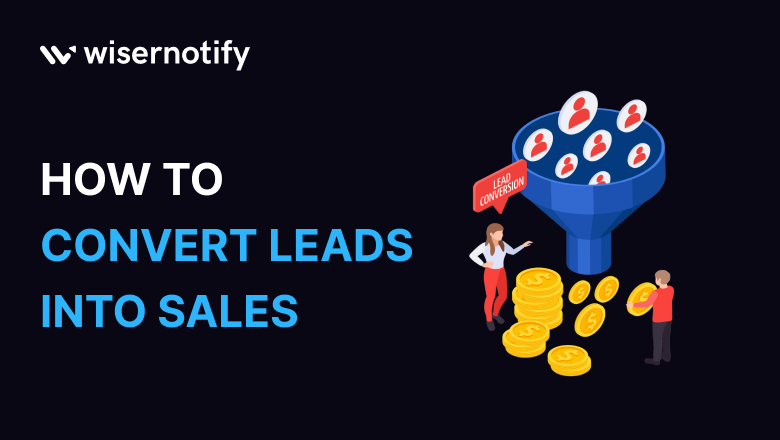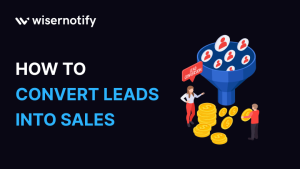Your marketing strategy is flawless, but conversion is not up to the mark. Converting leads into sales is a fundamental goal of any business, but it’s not easier said than done.
Despite having a steady stream of leads and outreach strategy, many businesses struggle to turn leads into sales.
The lead conversion process is not only about making them visit your website; it’s about nurturing and converting them into loyal, paying customers.
Whether a small business owner or a seasoned marketer, mastering this process is crucial for achieving sustainable growth to maximize your conversions.
In this blog, we will explore the 15 best ways to convert leads into sales. These strategies encompass various aspects of marketing and sales, from leveraging data to personalized customer experience and optimizing the sales process.
Visitors leave your website without taking action?
They don’t trust your site or feel urgency to act. WiserNotify builds both, turning doubt into action & visitors into customers.
Importance of Converting Leads into Paying Customers
Growth and Revenue: Leads are potential customers, but sales bring in money. Converting more leads grows your business and generates revenue.
Return on Investment: Marketing and sales efforts cost money. Converting leads demonstrates that your investment pays off by turning interested prospects into paying customers.
Sustainability: A steady sales flow is essential for a business to survive and thrive in the long run. Converting leads ensures a consistent stream of customers.
Customer Insights: The sales process provides valuable customer needs and preferences insights. This knowledge helps refine your offerings and marketing strategies for even better results.
Let’s unlock the secret to converting leads into sales. But before that, let’s examine some key statistics.
- Businesses that excel at nurturing leads generate 50% more sales-ready leads at a 33% lower cost.
- Nurtured leads produce a 20% increase in sales opportunities compared to non-nurtured leads.
- The average lead-to-customer conversion rate is approximately 4%, which can vary by industry and marketing strategies.
Did you know that only 22% of companies are satisfied with their conversion rates? This shows the significant challenge businesses face in converting leads into customers.
Let’s dive into different ways to convert leads into customers.
How to Convert Leads Into Sales
A robust sales process is essential for businesses to survive in the competitive marketplace and attract more leads. Effective lead conversion strategies can help businesses attract qualified leads and improve their conversion rate.
Here are 15 expert tips for converting leads into customers and boosting conversion rates.
1. Know Your Customers
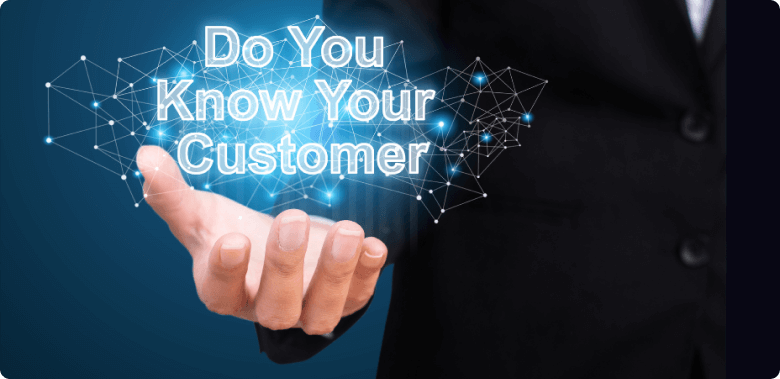
The first step is to understand your target audience by conducting market research, identifying their needs, preferences, and pain points, and using that information to create detailed customer personas that represent different segments of your audience.
Continuously monitoring industry trends and changes in consumer behavior will help you stay relevant and responsive to your audience’s evolving needs.
2. Understand Customers Needs
Understanding customer needs is a fundamental aspect of converting leads into sales and building long-term relationships. By gaining a deep understanding of what your customers want, you can tailor your marketing and sales strategies to meet their expectations better and solve their problems.
Practice active listening during interactions with leads and customers. Pay close attention to what they say and ask follow-up questions to gain deeper insights. This not only helps you better understand their needs but also shows that you value their input. Active listening can be applied in face-to-face meetings, phone calls, and online chats.
Related Post: How to Increase Conversion Rate in Sales
3. Personalizing the Journey for Better Conversion
Creating a personalized journey can significantly improve conversion rates by tailoring the shopping experience to each customer’s preferences, behaviors, and needs. By collecting browsing history, demographics, purchase behavior, past interactions, and preferences, you can divide customers into segments based on behavior and preferences.
Personalized product recommendations play a crucial role in guiding customers toward relevant purchases. Use an algorithm to suggest products based on their browsing and purchase history, increasing the likelihood of conversion.
4. Behavioral Targeting and Retargeting Techniques

Behavioral targeting and retargeting techniques deliver personalized and relevant messaging based on interactions and customer behaviors, increasing your business’s conversion rate.
Crafting personalized messages and offers tailored to each segment’s interests and needs aligns with their past interactions to increase relevance and engagement with your business. Use dynamic content on your website, advertising campaigns, and marketing materials to adapt visitors’ behavior in real time, including recommendations, dynamic pricing, or location-based offers.
Further, implementing tracking pixels or cookies can help you capture information about visitors who have shown interest in your products but haven’t completed a desired action. You can target audiences who have abandoned their shopping carts by offering discounts, highlighting product benefits, or providing additional customer support.
5. Optimizing Your Lead Scoring Model for E-commerce
A lead score model helps businesses rank and prioritize leads based on their likelihood of becoming customers. By fine-tuning the criteria used in the lead-scoring model, you can accurately identify leads more likely to convert into customers.
This ensures that the sales team spends time and resources on leads with the greatest potential for conversion, increasing the sales process’s efficiency. A well-optimized lead scoring model can help marketers tailor engagement strategies to different leads’ specific needs and preferences.
Businesses can more effectively prioritize leads by assigning numerical scores to leads based on their level of engagement and readiness to purchase. Leads with higher scores can be fast-tracked through the sales process, while those with low scores can be nurtured over time.
Use different lead scoring methods, such as explicit, Implicit, Predictive, and more.
6. Optimizing Your Website & Landing page
An optimized website and landing page are crucial for capturing and converting leads. Ensure the website is responsive and user-friendly to enhance the user experience and simplify the website’s navigation.
Craft clear and compelling Calls to action (CTAs) that guide visitors to the following action and influence them to purchase. Visually appealing images, elements, and a well-structured layout will also be used to provide a positive experience for them.
In addition, optimize content with SEO practices to improve ranking on search engines and enhance visibility among the target audience.
7. Utilize Chatbots and Live Chat
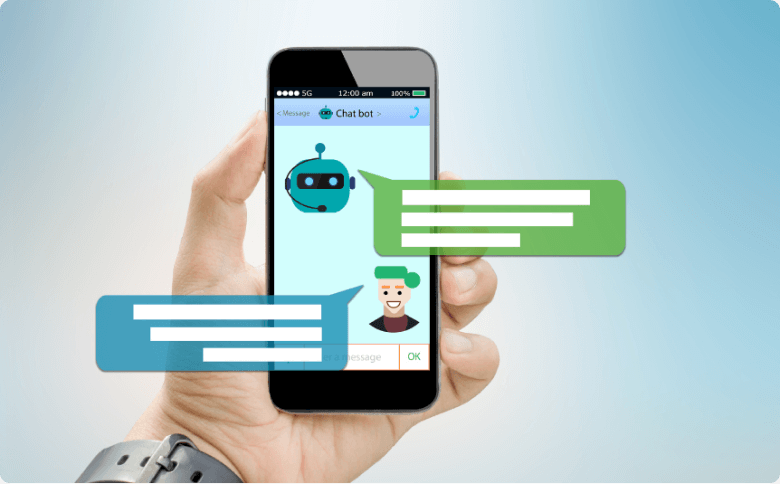
Chatbots are programmed to initiate interactions and engage with website visitors to respond to a wide range of queries, providing a personalized interaction experience. Implementing chatbots provides instant responses and answers to common queries among visitors, directing them to relevant information.
Further, using live chat to engage with visitors in real time guides them toward conversion by gathering information and providing personalized interaction based on their preferences and behaviors. Use chatbots to proactively engage with prospects and guide them through the conversion process more effectively.
8. Leverage Social Proof to Convert Leads into Customer
Social proof marketing can be your secret weapon for converting leads into sales. It capitalizes on the idea that people trust the experiences of others. To leverage this, showcase social proof notifications, positive customer reviews and testimonials on your website and product pages. To build trust, include customer names, photos, and even titles for B2B testimonials.
Leveraging influencer endorsements and displaying trust badges and usage stats can further enhance credibility. By strategically placing social proof elements on your website, in emails, and across social media, you can create a persuasive narrative that drives leads to become paying customers.
Build trust & FOMO
Highlight real-time activities like reviews, sales & sign-ups.
9. Create FOMO and Urgency
Urgency and FOMO are potent triggers influencing people to act quickly and increase sales. Using time-sensitive promotions, scarcity tactics, countdown timers, flash sales, seasonal promotions, and other psychological triggers that leads them to avoid losing valuable offers.
FOMO tools like WiserNotify can help you drive more conversions and boost sales with popup notifications.
10. Use CRM & Automation Tools

A robust CRM system lets you monitor prospects’ funnel stages and how the sales team can nurture them. This helps your sales team handle all the incoming leads and supervise their sales pipeline at every buying stage.
Automation tools automate repetitive tasks such as data entry, appointment scheduling, and follow-up reminders, allowing sales teams to focus on building more relationships and closing deals. In addition, CRM and automation tools can help the sales and marketing teams seamlessly coordinate to communicate quickly and work together to close more leads.
Ensure your CRM integrates with other tools, such as email marketing platforms, social media management tools, and analytic software for seamless workflow.
11. Follow Up Promptly
This might look time-consuming, but it can help you convert leads into customers by responding quickly to leads and building a strong relationship with them. With the proper follow-up, you can address the concerns of your potential customers and nurture interest, leaving a positive impression on them.
Don’t rely on one method of communication; use multiple channels, such as emails, calls, and even social media, to reach out and maximize conversion opportunities. Further, tailor each follow-up message to their specific needs and interests.
12. Leveraging Social Media to Nurture Leads
Social media platforms are great for interacting with potential leads through curated content, ads, and live streams. An effective strategy involves a mix of organic and paid promotions to showcase the brand’s personality and highlight your products. Platforms like Facebook, Instagram, Linkedin and others can amplify your reach and attract the right audiences.
LinkedIn, in particular, is a powerful platform for B2B marketing and lead generation. Tools like LinkedHelper can improve your LinkedIn outreach by automating personalized messaging and engagement, making it easier to connect with potential leads.
Further, social listening tools should be used to monitor conversions, trends, and other insights to improve its effectiveness.
13. Content Marketing: Driving Conversion with Quality Content

Content marketing is crucial in converting leads into sales. Creating high-quality content that addresses your audience’s pain points and interests can help you take the desired action. To attract and engage leads, distribute your content through various channels, such as blogs, videos, ebooks, webinars, and podcasts.
Use lead magnets, such as free eBooks, PDFs, and other freebies, to capture contact information and convert website visitors into leads.
14. Email Marketing
Develop targeted email campaigns to nurture potential leads with relevant content, offers, and promotions. Further, sending emails to every subscriber is ineffective; segment email lists based on lead behavior, preferences, and demographics to deliver personalized messages.
In addition, incorporate software to automate emails and send email sequences based on lead interactions and behaviors. Avoid overloading inboxes, which can lead to unsubscriptions and complaints.
15. Influencer Marketing
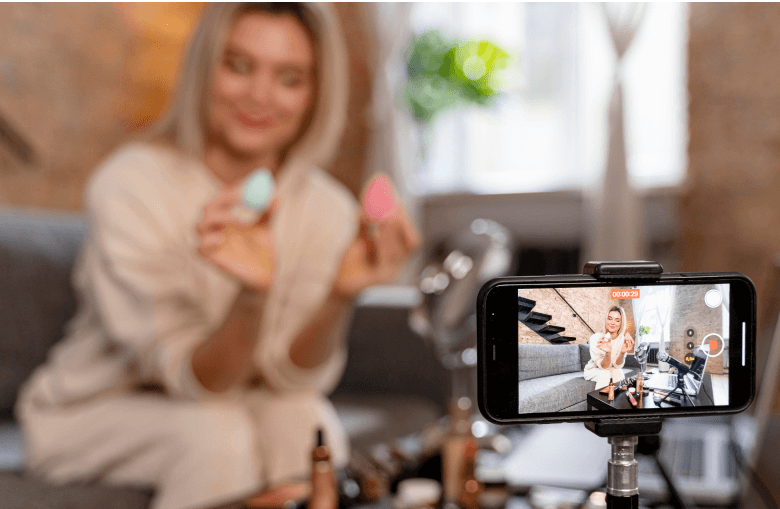
Collaborating with influencers and industry experts with huge, relevant, and engaged audiences that align with your target market can help you connect with suitable leads. Influencers can help you tap into their extensive reach and expose their products or services to a broader target audience.
Influencer marketing can foster authentic and engaging interactions between influencers and followers, making it like personalized recommendations rather than a direct sale. In addition, it serves as a social proof to attract potential customers, seeing others positively engaging with your brand and influencing them to become leads.
16. Measuring and Optimizing
Identify the important lead conversion metrics, such as conversion rates, lead response time, cost per lead, and customer acquisition cost, to understand the effectiveness of each strategy. Tools like Google Analytics, CRM analytics, and marketing automation platforms can help you monitor your KPIs.
Conduct A/B testing on different lead conversion strategies by creating two versions and testing them effectively to determine which performs better. Further, collect feedback from your sales team and leads or customers using surveys, interviews, and feedback to understand areas of improvement.
Wrapping Up
Converting leads into customers is crucial for business success and growth; mastering the process requires a strategic approach. These 15 top tips, from knowing your audiences to creating FOMO tactics, can significantly enhance your online store’s conversion rate.
If your sales strategy is strong, it can help you generate leads and reach higher revenue goals. Converting leads into customers isn’t easy; you need to focus on several strategies, optimize them, and experiment to find the best one.
Calculate your lead generation metrics, use lead conversion tools, and monitor prospective customers’ sales journeys to improve the lead conversion ratio. In addition, ensure your website, marketing materials, and sales reps speak the same language for successful lead conversion.
